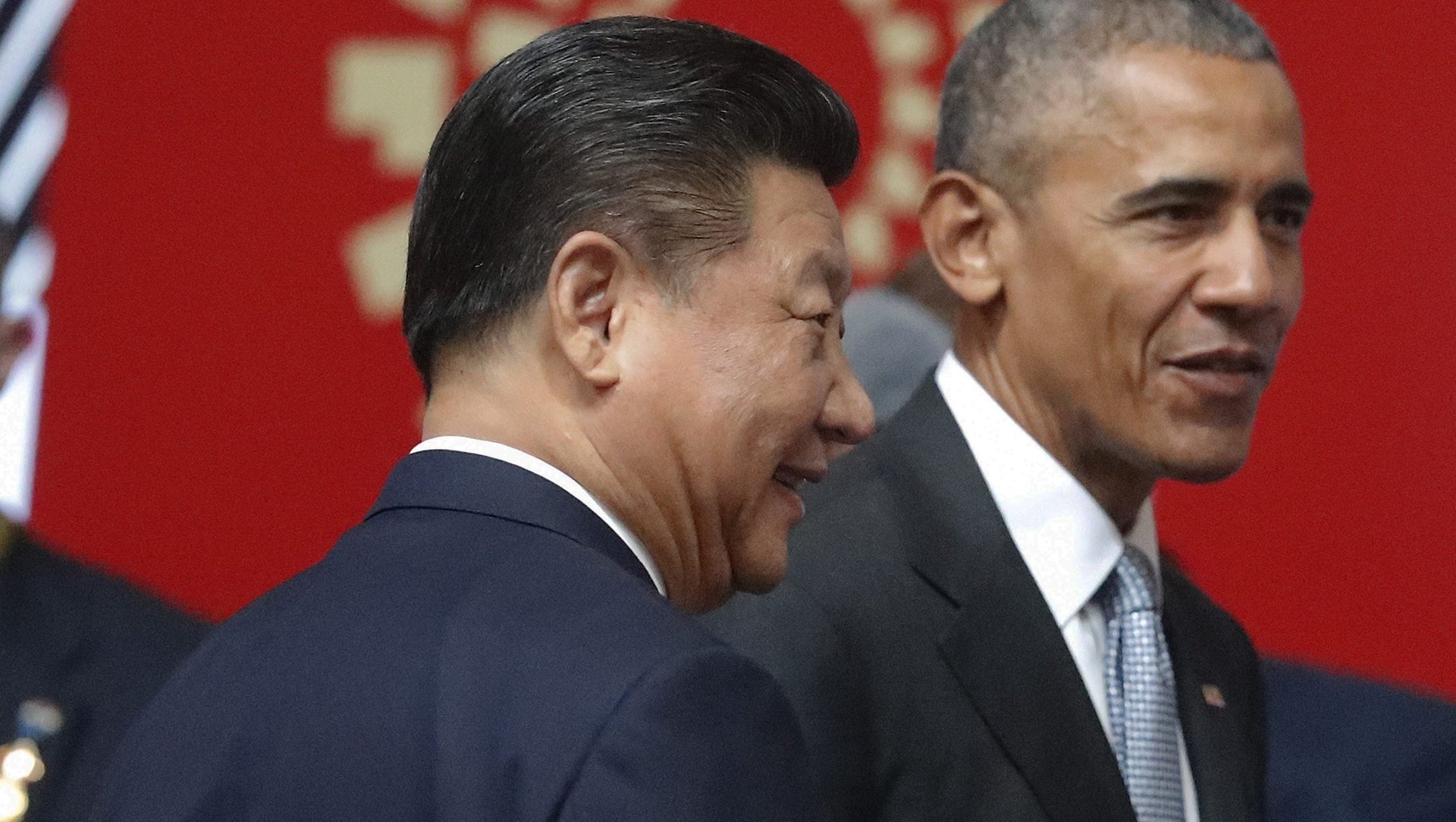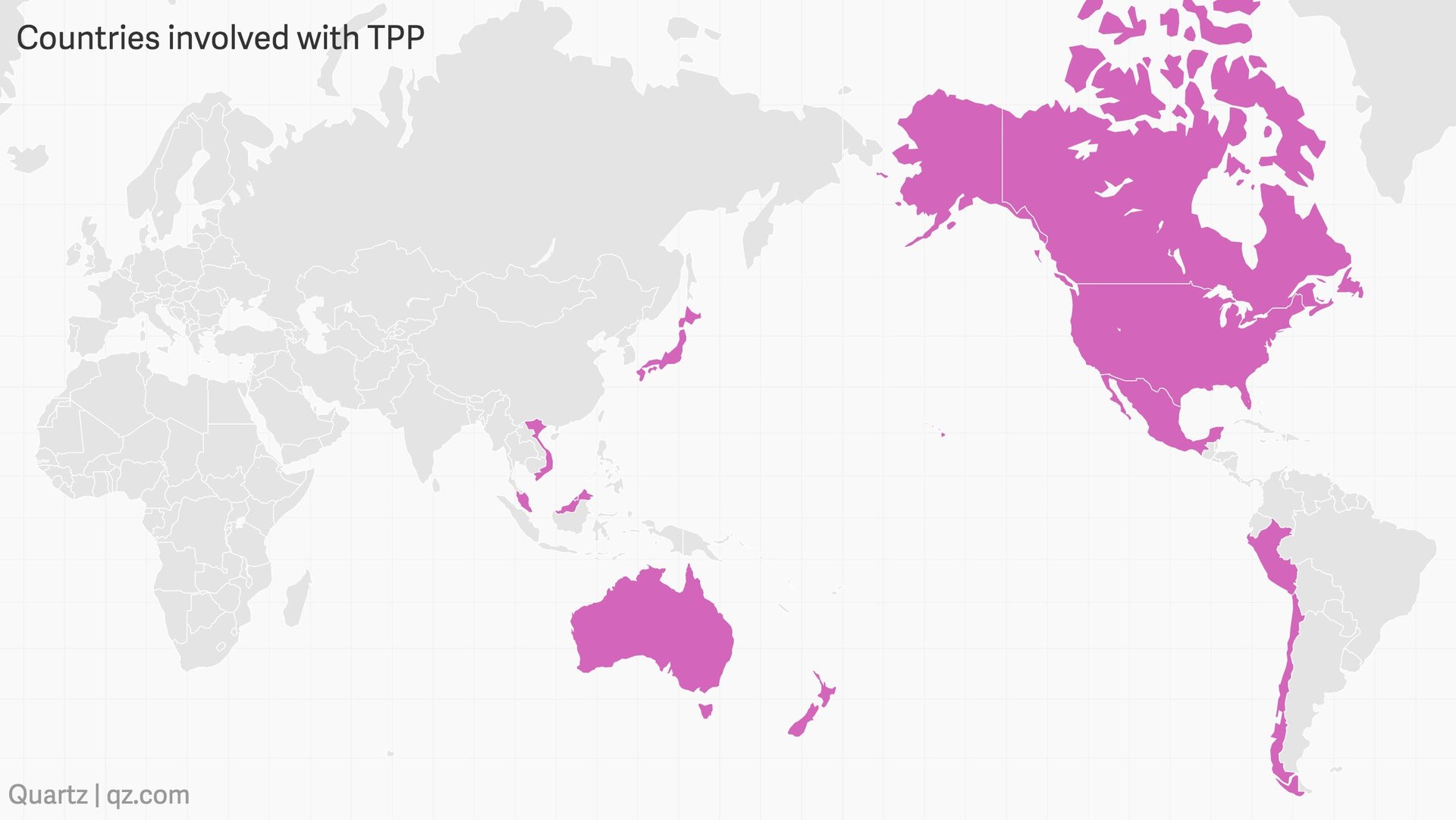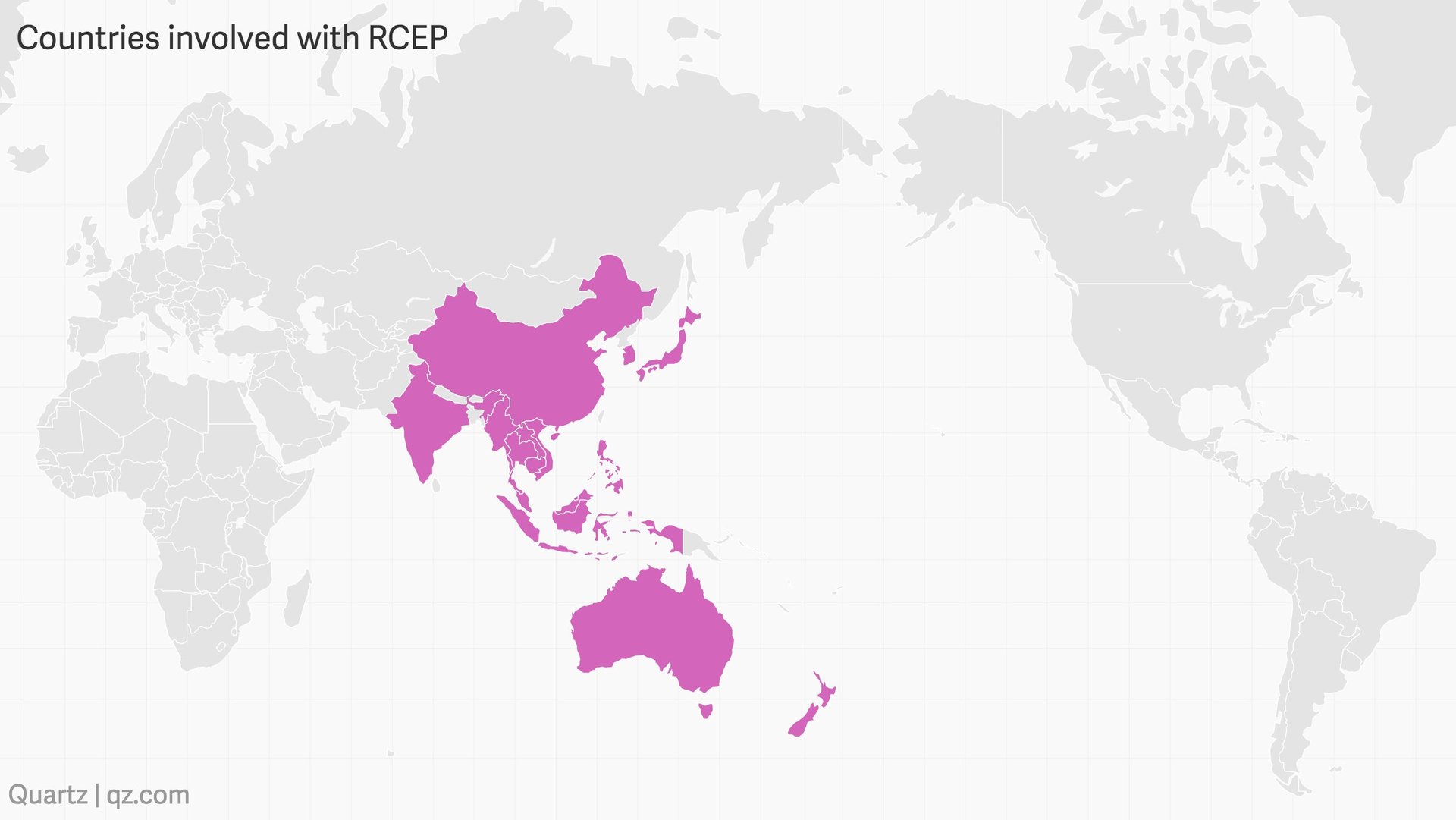With the TPP cratering, Asia could end up with a China-led trade deal that excludes the US
US president-elect Donald J. Trump has promised to tear up the Trans-Pacific Partnership on his very first day in the White House. If that happens, then a China-led trade pact that involves half the world’s population, but excludes the US, is likely to fill the void.


US president-elect Donald J. Trump has promised to tear up the Trans-Pacific Partnership on his very first day in the White House. If that happens, then a China-led trade pact that involves half the world’s population, but excludes the US, is likely to fill the void.
The Regional Comprehensive Economic Partnership (RCEP) is an initiative linking all 10 ASEAN countries and six nations with which the organization has existing free trade agreements: China, India, Japan, South Korea, Australia, and New Zealand. The agreement, introduced in late 2011, is much less ambitious in scope than the TPP, and covers more of the world’s less-wealthy countries.
But RCEP countries have outpaced TPP ones in GDP growth:
Currently, the TPP has 12 members and the RCEP involves 16:
Only seven of them overlap. The TPP is a much more “global” alliance, linking Latin American countries with Asia in an attempt to balance out China’s dominance.

The RCEP, on the other hand, was designed to “anticipate the bare minimum of trade liberalization” among neighboring countries in Asia.

The TPP requires members to commit to heightened standards in areas like labor law, environmental protection, and intellectual property, but the RCEP focuses mainly on tariff reduction to stimulate trade. The RCEP will cover trade in goods, services, investments, technical cooperation, intellectual property, competition, dispute settlement, and other issues, according to a 2015 report from ASEAN (pdf).
Asia is, now and for many years to come, the world’s fastest-growing region. If the TPP withers and the RCEP is signed, the US will be left out of the region’s biggest-ever free-trade agreement.
China, excluded from the TPP, is a key supporter of the RCEP. Negotiations over the latter began in 2013 but have been delayed, thanks to pressure from the TPP and China’s territorial disputes with its neighbors. Now, countries are leaning more toward the RCEP.
Australia and Japan, which are also members of the TPP, have previously expressed their wishes to accelerate talks on the RCEP. Hours before Trump’s announcement to scrape the TPP, Japanese prime minister Shinzo Abe warned that the TPP would be ”meaningless” without the US. Meanwhile Peru and Chile, which are members of the TPP but not the RCEP, are now seeking to join the China-led deal, Tan Jian, a senior member of China’s delegation at the APEC meeting, told Reuters.
“We encourage that all regional undertakings, including TPP and RCEP, remain open, transparent and inclusive and draw on each other,” APEC leaders said in a Nov. 20 declaration, as they vowed to fight protectionism.
With Trump on track to create a more isolationist US, China is emerging as the world’s strongest proponent of globalization. In recent days Xi has held a flurry of meetings with heads of state, including leaders of some nations, like Ecuador, that Beijing has historically ignored.